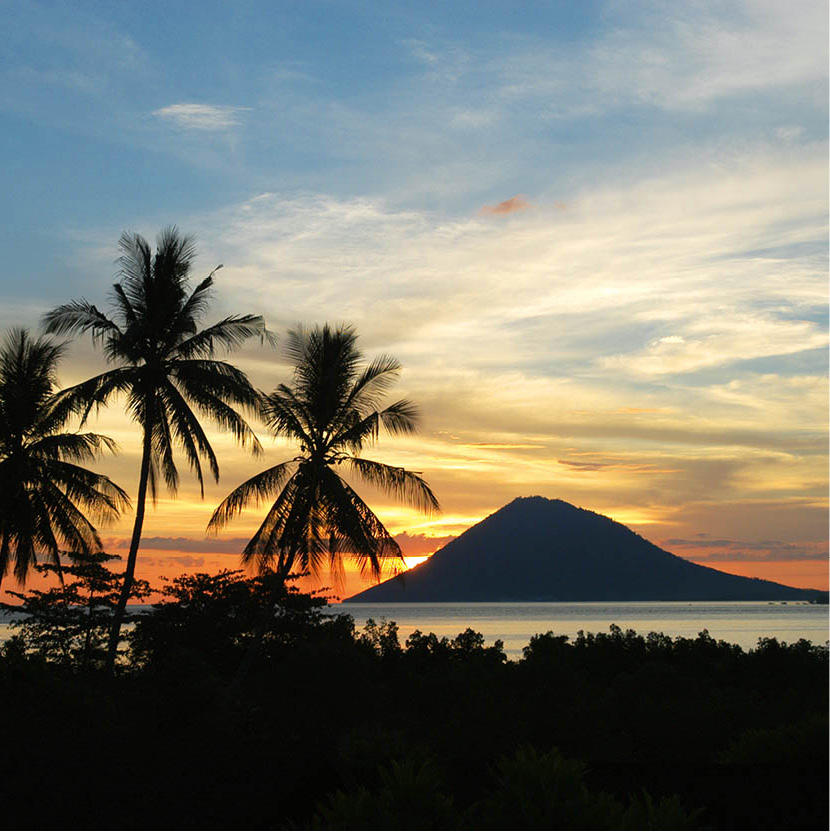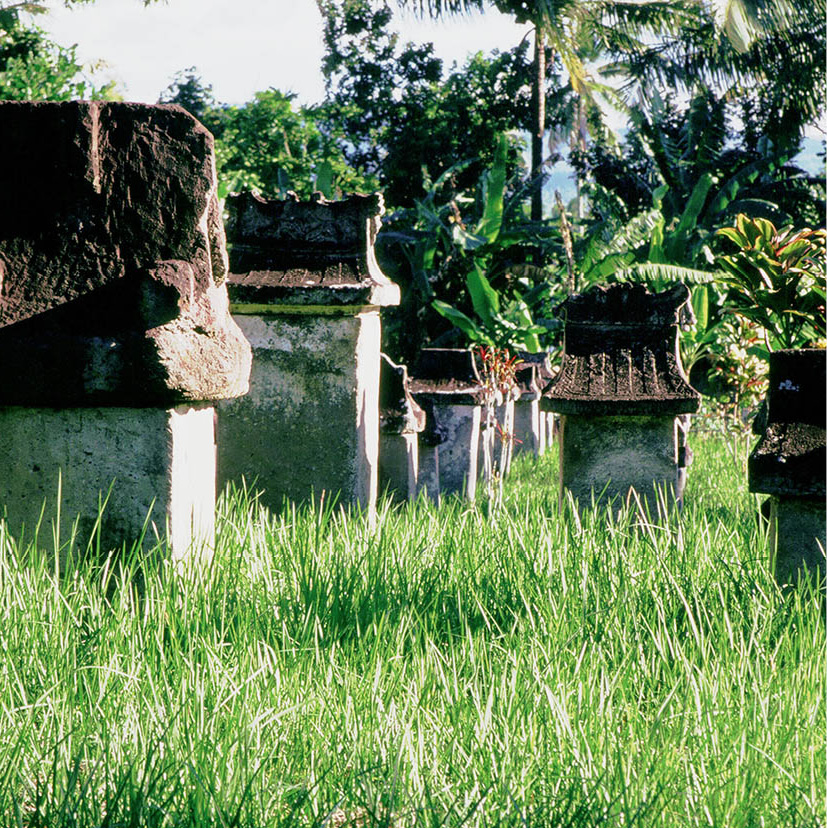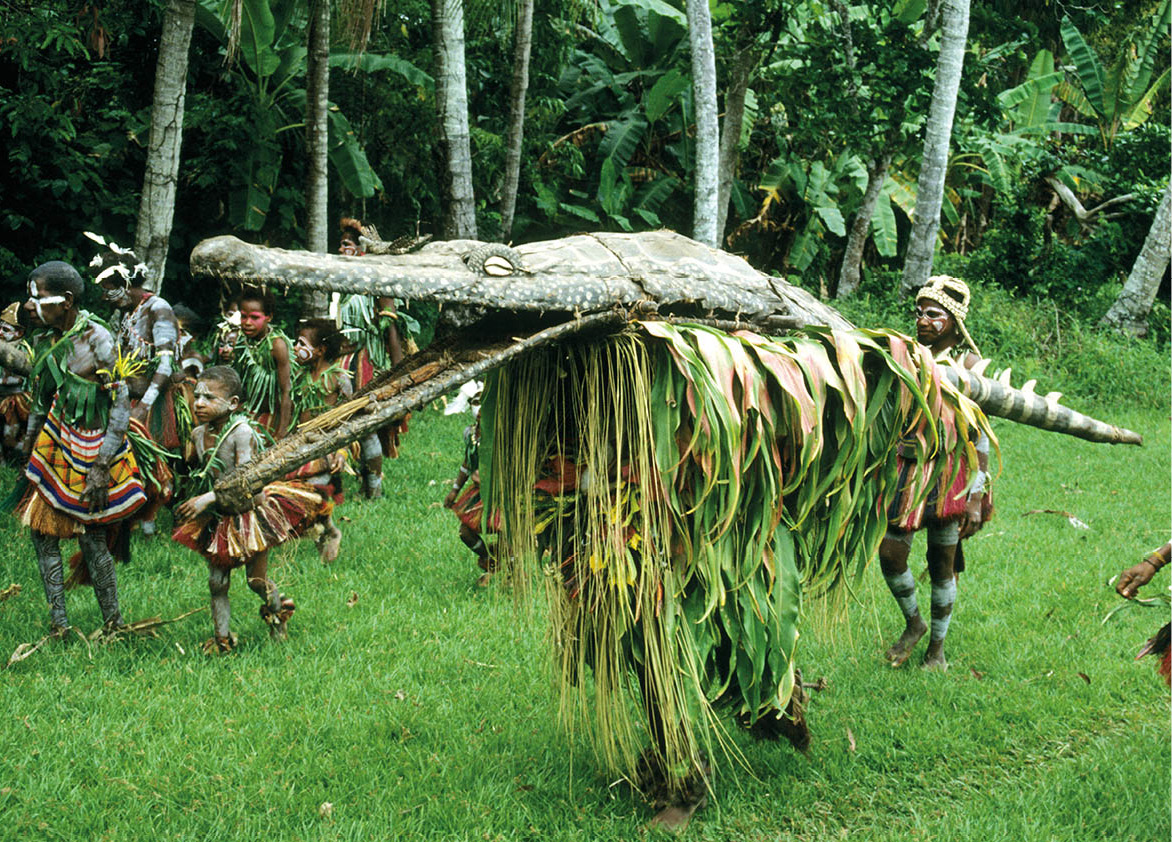Something of an anomaly, Sulawesi Utara (North Sulawesi) is a fertile, snake-like volcanic peninsula outstretched in the middle of the vast Maluku Sea. World-class diving surrounds the province, and a menagerie of exotic wildlife resides in its national parks and reserves.
The full spectrum of diving activities ranges from magnificent coral gardens at Bunaken National Park and Bangka Strait to the underwater volcanoes at the Sangihe-Talaud islands and the unusual and rarely seen critters of Lembeh Strait. Land-based activities focus on rainforest hiking in Tangkoko-Dua Saudara Nature Reserve and Bogani Nani Wartabone National Park, along with volcano-climbing, river-rafting, treks to powerful waterfalls and even golf. Exploring the scenic Tomohon-Tondano highlands area rounds out the choices. The people are genuinely friendly and open.
Seaside Manado
Nearly 2.5 million people make their homes in North Sulawesi, about 10 percent of whom reside in Manado % [map], the pleasant provincial capital. The city lies at the foot of the lovely mountainous Minahasa region, which is dotted with active volcanoes, highland lakes and hot-water springs. Coconut plantations stretch for miles along the coasts (18,000 tonnes of copra are produced in North Sulawesi every month) that teem with fish and coral. Inland there are bountiful clove and coffee plantations, terraced rice fields and vegetable and flower gardens.
Alfred Russel Wallace called Manado ‘one of the prettiest towns in the East’, but the city has since lost its initial lustre and offers little in the way of urban attractions apart from the 19th-century Ban Hin Kiong Buddhist temple, the Museum Negeri Propinsi Sulawesi Utara, which displays ethnographic artefacts from Minahasa, and a 30-metre (98ft) statue of Jesus Christ, the world’s fourth-largest of its kind. The real attractions, however, are the nearby mountains, coral reefs and rainforests.

Sunset at Bunaken.
Indonesian Tourist Board
Bunaken Marine National Park
Manado is an excellent staging point for diving and snorkelling trips to Bunaken Marine National Park ^ [map], 15km (10 miles) offshore. The coral reefs teem with thousands of species of colourful tropical fish along steep drop-offs that plunge thousands of metres into the abyss. Sea turtles, sharks and pods of dolphins make their way around the park, and there is also a World War II-era wreck to explore.
Further to the north, the 70-odd islands in the Sangihe-Talaud chain offer white-sand beaches and equally spectacular diving. Dotted with volcanoes and unusual rock formations, some of the islands are over 1,500 metres (4,920ft) high and are densely covered by coconut palms.
Like most unspoiled areas, the islands are not easy to get to. Divers who are not deterred by the long journey and want to discover the unknown are rewarded with 60-metre (200ft) visibility and 100-year old gigantic sponges. Some of the other highlights include an underwater lava flow and Mahangetang, a submarine volcano that releases silver bubbles into the sea – an unforgettable sight.
A very good road network radiates from Manado. One interesting route runs 55km (35 miles) east to Bitung & [map] on the eastern coast of the peninsula. Bitung is situated along Lembeh Strait, which is a divers’ Mecca for unusual muck-dwelling creatures such as hairy frogfish and mimic octopus. Along the way, the road passes through Airmadidi (Boiling Water), and the main road continues east to the coastal Kema, populated by burghers (Minahasan-Dutch settlers), who all have Dutch surnames. South of Kema there is a stretch of coastline ideal for water sports, with coral gardens, around Nona island.
Tangkoko-Dua Sudara Nature Reserve
From Bitung, a fairly bumpy northern road winds through to the Tangkoko-Dua Sudara Nature Reserve * [map], one of the most important places for terrestrial nature conservation in Minahasa. There are few places in the world where such a wide variety of habitats, plants and animals are crammed into one small forest (8,890 hectares/21,990 acres). To date, scientists have documented 26 mammal, 18 bird, 15 reptile and over 200 plant species here, including spectral tarsiers – one of the world’s smallest primates – troops of endangered crested black macaques, marsupial cuscus, endemic red-knobbed hornbills and eight species of kingfishers. Local guides are available at Batu Putih village at the entrance of the reserve.

A waruga stone sarcophagi.
Indonesian Tourist Board
Minahasan hills
A road south from Airmadidi winds up through the Minahasa highlands to the lovely lake district at Tondano ( [map], an attractive town surrounded by rice fields and forested hills. On the way to Tondano there is an open-air museum in Sawangan displaying waruga – stone sarcophagi hewn from boulders – with engraved depictions of the deceased’s prior occupation. Dating from the 12th century, Minahasans once encased their dead in warugas in a crouching foetal position to facilitate rebirth, together with their most valued possessions.
On a hill outside Tondano at Kampung Java, a Muslim enclave in a Christian region, lies the mausoleum of Kyai Maja, a Javanese leader who fought with Diponegoro during the Java Wars (1825–30) and was exiled here by the Dutch. There are a number of interesting towns around Danau Tondano, including Ranopaso and Pulutan, noted for hot springs and ceramics. At the southern end of the lake is the Kolongan Kawangkoan, site of kolintang performances, bullock cart races and Japanese caves. Bukit Temboan Rurukan offers a panoramic vantage point.
West from Tondano, the road cuts through more hills on the way to Tomohon, a busy centre for market, education and missionary activities. There are hot springs nearby at Lahendong, amid a clove tree plantation, and several at Langowan. A short walk from Tincep brings you to an impressive waterfall, and construction of made-to-order Minahasan houses can be seen at Woloan. An easy hour’s hike up a wide path on Gunung Mahawu volcano is rewarded by a 360-degree view of Minahasa and the surrounding islands.
Tomohon
When Alfred Russel Wallace travelled through this region, he wrote of ‘fine volcanic peaks 6,000 or 7,000 feet high, forming grand and picturesque backgrounds to the landscape’ in the Minahasa highlands. North Sulawesi is the only part of a strangely sprawling island that has volcanoes. Nestled between two of them, Tomohon means ‘people who pray’.
Tip
At Pinawetengan, about a 30-minute drive from Tomohon, there is a small but well-endowed mini-museum as well as a weaving handicraft area. Visitors can watch the weavers at work and purchase their lovely woven handicrafts, which are named after the village.
For energetic travellers, a trek to the top of either of Tomohon’s adjacent peaks, Lokon or Mahawu, is both challenging and worthwhile for spectacular views. Lokon erupts from time to time; its last episode was in August 2015, causing concern in nearby villages and the town of Tomohon. On a clear morning from the rim of Mahawu’s crater there is a bird’s-eye view of the whole region, including Manado and Bunaken island to the north, and as far as Bitung and Gunung Duasudara to the east.
Surrounded by neat rows of vegetable crops are highland lakes; the largest and best known is Lake Tondano. This makes a pleasant lunch stop, as colourful stilted restaurants serving fresh seafood decorate the water’s edge. Lake Linow is fed by a steaming volcanic spring, and on a hot day its colour changes from deep blue to turquoise, green and sulphur-yellow. A short drive from Tomohon is Kali waterfall, within a moderately energetic walk from the car park through luxuriant rainforest. Kali has a charming fairy-tale quality, with surrounding rock walls covered with beard moss that blows in the breeze and spray. Take a raincoat and something to cover your camera to avoid getting wet.
Amurang, a small harbour town located 80km (50 miles) southwest of Manado, has a thriving trade with East Kalimantan across the Sulawesi Sea. Surrounded by lovely hills, this is the gateway to southern Minahasa and the colonial town Gorontalo, a day’s drive west via the Trans-Sulawesi highway.

A fishing boat at Gorontalo.
Shutterstock
Gorontalo
Diving has been available for several years in Gorontalo , [map], with the season being November to April. Twenty dive sites include dramatic coral walls, multiple pinnacles, caverns, muck, shallow coral gardens and two wrecks. A particularly important feature is Sulawesi’s continental wall, which comes within a few metres of the coastline bringing deep blue water to the shore. Gorontalo has a growing list of new, undescribed and endemic species, as well as some of the most dense and diverse hard coral growth in the Indo-Pacific region. The huge, surreal Salvador Dali sponge can only be found in Gorontalo.
A scenic inland road heads east to the Kotamobagu coffee plantation region. Nearby is Gunung Ambang Nature Reserve ⁄ [map], an active nesting site for the unusual mound-building maleo bird. Further west lies Bogani Nani Wartabone National Park ¤ [map] (formerly called Dumoga Bone National Park), a vast mountainous rainforest rich in fruit-bearing trees such as durian, nutmeg and figs, and home to a collection of endemic Sulawesi animals including the babirusa (Sulawesi ‘pig-deer’) and the shy anoa. The New York-based Wildlife Conservation Society, established in 1895, partners with a local conservation group to manage three of the largest communal nesting grounds for the maleo birds in the park. Its southern coast is the last known site of beach nests for this endangered land-bird.
All the way from Mongolia
The fair-skinned Minahasans of North Sulawesi are descended from Asians who arrived several thousand years ago, probably from Mongolia, and over the centuries intermarried with Chinese and European settlers. The remaining islanders – accomplished fishermen and farmers – share ethnic roots with the Filipinos to the north. There are a large number of Catholics and Protestants, the result of 16th-century conversions by Spanish missionaries from Manila, followed by the efforts of Dutch Calvinist missionaries.
Minahasans have a vigorous culture, their dances warrior-like and their music – performed with bamboo instruments – oddly European. They are also known for their unusual taste in food: spicy dog, cat, forest rat and bat dishes are all popular.
